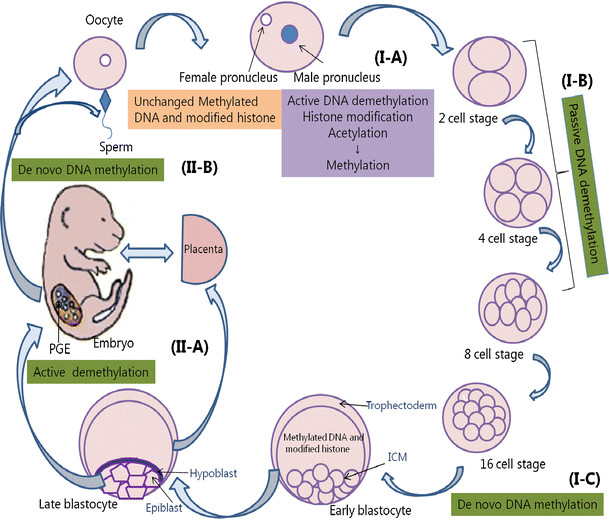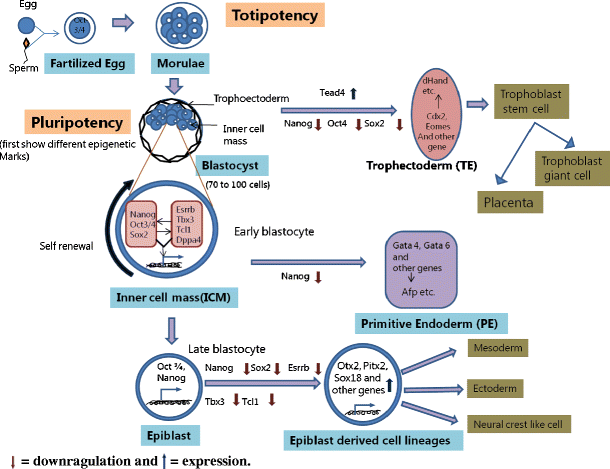Molecular marks for epigenetic identification of developmental and cancer stem cells
- PMID: 22704268
- PMCID: PMC3365374
- DOI: 10.1007/s13148-010-0016-0
Molecular marks for epigenetic identification of developmental and cancer stem cells
Abstract
Epigenetic regulations of genes by reversible methylation of DNA (at the carbon-5 of cytosine) and numerous reversible modifications of histones play important roles in normal physiology and development, and epigenetic deregulations are associated with developmental disorders and various disease states, including cancer. Stem cells have the capacity to self-renew indefinitely. Similar to stem cells, some malignant cells have the capacity to divide indefinitely and are referred to as cancer stem cells. In recent times, direct correlation between epigenetic modifications and reprogramming of stem cell and cancer stem cell is emerging. Major discoveries were made with investigations on reprogramming gene products, also known as master regulators of totipotency and inducer of pluoripotency, namely, OCT4, NANOG, cMYC, SOX2, Klf4, and LIN28. The challenge to induce pluripotency is the insertion of four reprogramming genes (Oct4, Sox2, Klf4, and c-Myc) into the genome. There are always risks of silencing of these genes by epigenetic modifications in the host cells, particularly, when introduced through retroviral techniques. In this contribution, we will discuss some of the major discoveries on epigenetic modifications within the chromatin of various genes associated with cancer progression and cancer stem cells in comparison to normal development of stem cell. These modifications may be considered as molecular signatures for predicting disorders of development and for identifying disease states.
Electronic supplementary material: The online version of this article (doi:10.1007/s13148-010-0016-0) contains supplementary material, which is available to authorized users.
Figures



References
-
- Adenot PG, Mercier Y, Renard J-P, Thompson EM. Differential H4 acetylation of paternal and maternal chromatin precedes DNA replication and differential transcriptional activity in pronuclei of 1-cell mouse embryos. Development. 1997;124:4625–4625. - PubMed
LinkOut - more resources
Full Text Sources
Research Materials
